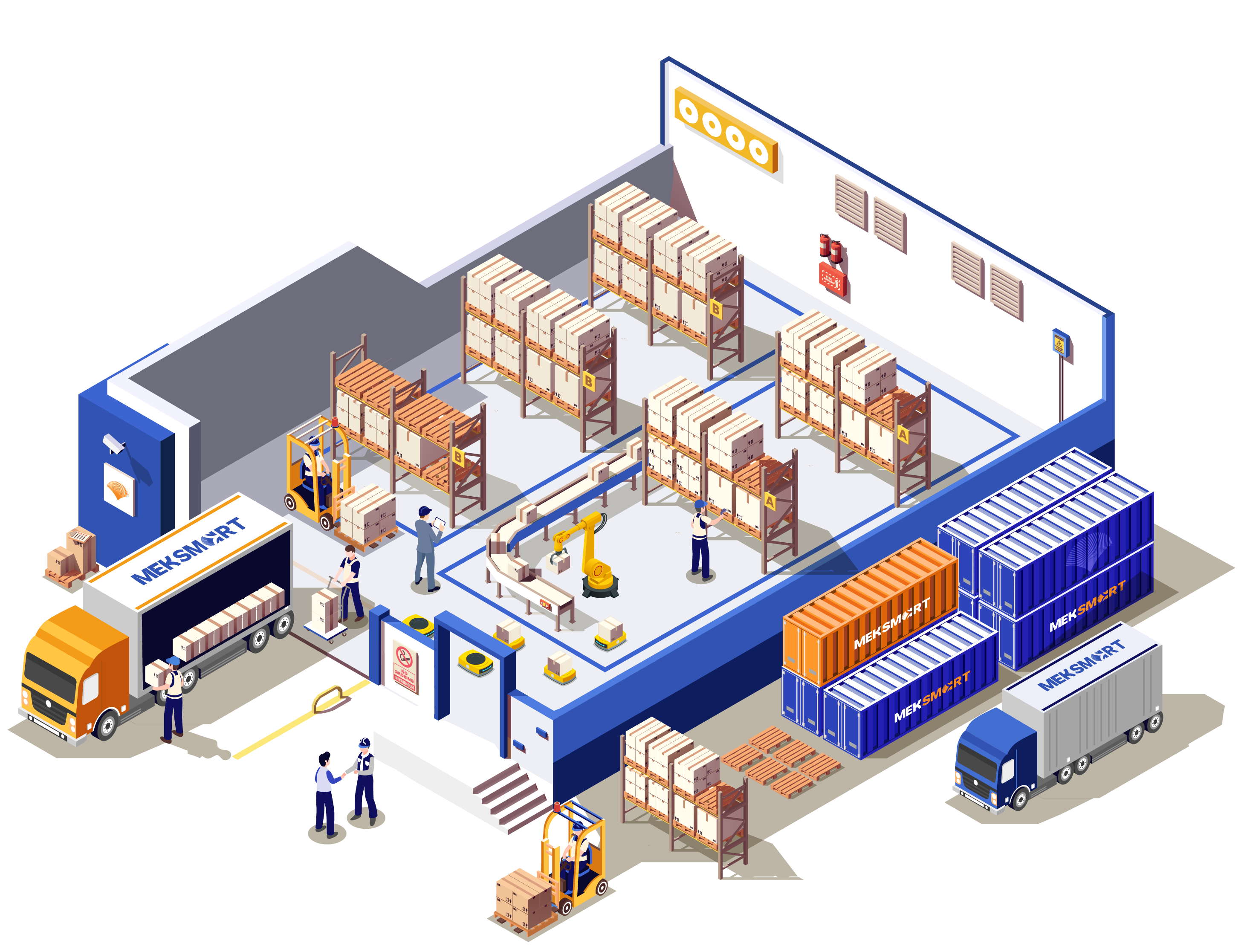MEKSMART
GENERAL NEWS
Author:
Update: 06/12/2022
PUT AWAY - PROCEDURES FORGET IN STOCK ADMINISTRATION
According to Cyzerg, managers when evaluating an organization's Warehouse, the process they consider the least efficient in the Operations Chain is:
- 53% choose Inventory Control
- 47% choose Picking (Picking)
- 45% choose Import (Put Away)
Importing is the process of transferring goods from the container, from the factory to a convenient location in the warehouse for further processing. This process is often overlooked by warehouse managers when optimizing processes, although the storage location of items (Output of Incoming) is an important bottleneck in the optimization process. cost and agile operation of staff.
1. Benefits that optimal Put Away brings
The main goal of this process is to move goods from the dock, and container to the most optimal warehouse storage location. A good Import process will ensure that:
- Goods are stored quickly and efficiently;
- The travel distance between locations in the warehouse is reduced to a minimum;
- Ensure the safety of goods and the safety of warehouse staff;
- Maximize the warehouse space used;
- Easily find and select goods and track;
Failure to properly invest in this process will directly impact the productivity of warehouse operations.
2. Optimizing import operations
Collect data and use real-time analytics
Proven data that it is not only a common trend but also an effective tool to improve warehouse operations and implement an efficient Import process.
To meet the goal of finding the most optimal storage location, data on 3D dimensions, weight, frequency of receipt and transportation, type of goods (e.g. dangerous, perishable, high-value goods, etc.), order/sales volume, and stock availability must be collected and analyzed consistently.
Therefore, a company's warehouse management systems (WMS) must include 2 key qualities: full/flexible data collection capabilities and ongoing data analysis to eliminate errors and reduce costs.
For example, if the warehouse is collecting cargo weight data, the built-in digital weight scale will do the job, while the parcel or pallet dimensioning system will record the data about the parcel or pallet. size.
Monitor storage capacity & available space
Limit excess travel time to space shortages at critical points, and increase cargo storage capacity by monitoring storage capacity and availability.
To monitor capacity and available space, the warehouse can use a barcode scanner and bin location to track used/unused space across warehouse zones. This solution is available on most warehouse management systems (WMS). However, this system is prone to errors due to the reliance on warehouse staff to scan the location of crates and goods each time they perform a task.
Another approach is to use RFID to automatically record tasks without any human intervention. While this solution is still being tweaked and tested, the use of RFID combined with more advanced tools, such as sensors, will form part of a technology ecosystem with real-time tracking capabilities. in stock.
Reduced travel time
One of the main goals of Import is to reduce the time it takes to move goods from the receiving area to the storage location.
To do this, managers can do ABC analysis to better understand high volume/frequency goods. The warehouse layout should then be adjusted (if necessary) to move high-volume/frequency goods closer to the shipping areas:
- A is the commodity with the highest annual consumption value. It accounts for 70-80% of the company's annual consumption value and only 10-20% of the total inventory.
- C is the commodity with the lowest consumption value. Value only 5% – lower than annual consumption value and accounts for 50% of total inventory.
- B is located between A and C, with an average sales value of 15-25%, usually 30% of total inventory.
The annual consumption value is calculated by the formula: (Annual demand) x (Item cost per unit)
Through ABC classification, Supply Chain managers can identify hot spots in inventory and separate them from the rest, especially with items that are in abundance but do not bring profit.
Determining the shortest route to a storage location is another way to reduce travel time. To do so, warehouse managers must consider factors such as distance, potential bottlenecks in warehouse traffic, and potential conflicts with other processes involved in travel.
Directly do Put away whenever possible
When using this method, goods are moved directly from the receiving area to the final location without going through an intermediary stage. This method not only speeds up the process but also reduces handling and space requirements.
The company's WMS needs to be able to specify final storage locations, from the Advance Shipment Notice / from the point of delivery at the receiving terminal. Without this ability, it is difficult for the Warehouse to achieve an efficient Direct Import process
Flexibly arrange both fixed and flexible positions in the warehouse.
A permanent location is a predefined storage space, warehouse area, aisle, or bin designated by specific criteria. For example, a permanent location can be associated with a specific product category, customer, final destination, etc. Fixed locations increase process efficiency as warehouse staff can remember the assignment of the specific location of the goods.
On the other hand, clutter locations also offer more flexibility, allowing employees to put anything in the first available space they find on the road. When using flexible locations, a reliable inventory management system is needed to track goods and locations. Flexible locations can also be leveraged to temporarily store high-volume seasonal items closer to home, easy to replace with another item (s) when traffic changes.
Keep the warehouse clean
Last but not least, a clean and organized warehouse/distribution center makes all the difference in running the process.
A poorly organized facility will have a direct impact on the speed at which goods are moved. Employees take longer to place, moving goods through obstacles to get to the desired location. And most importantly, poor warehouse organization increases employee safety risks and compromises the integrity of goods.
As such, there are many different ways to optimize the Import process and increase the efficiency of the warehouse management process. Optimize warehouse operations through simple best practices like keeping warehouses clean and organized, using technology to track space usage, or performing ABC analysis to restructure warehouse layouts It is a matter of careful attention to detail, planning, and execution.
According to cyzerg.com, lokad.com







